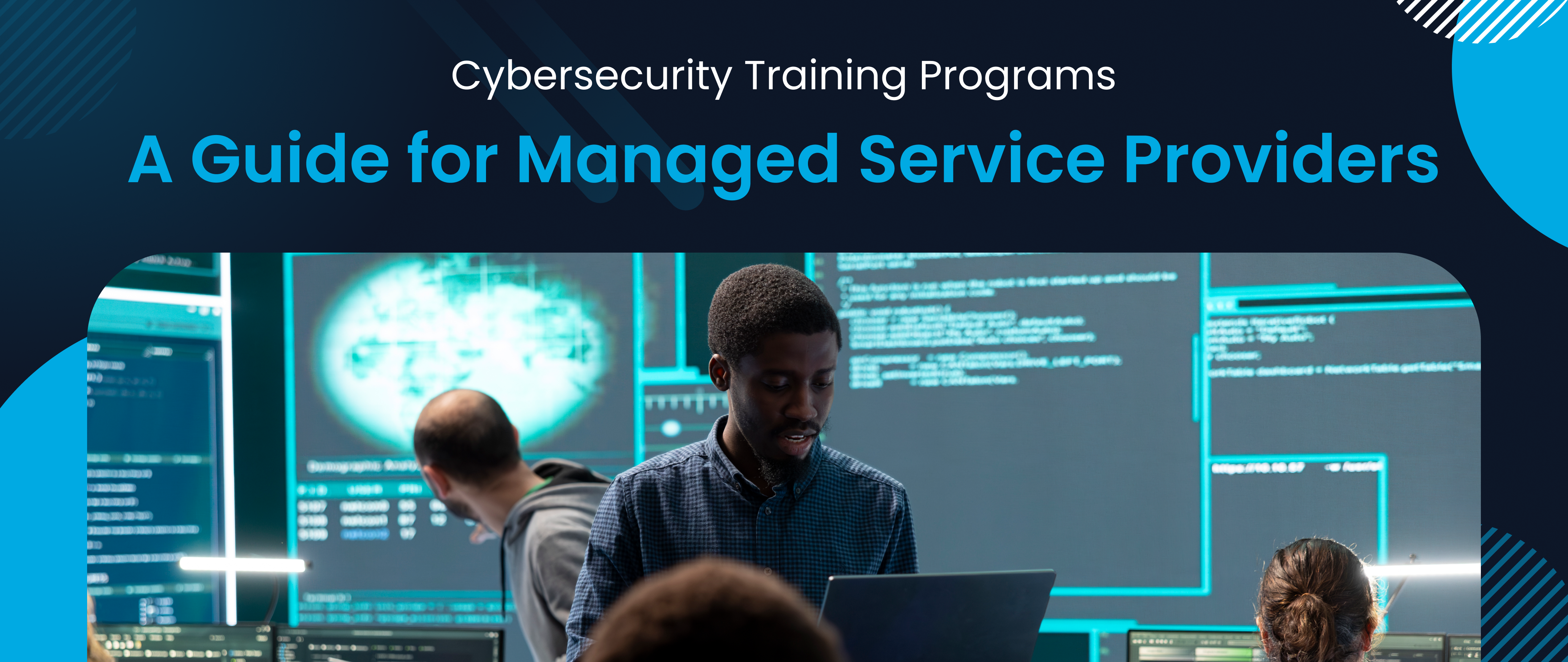Cybersecurity Training for MSPs: A Practical Guide
Managed Service Providers (MSPs) increasingly find that cybersecurity training for MSPs is more than a nice-to-have — it’s essential. High-profile data breaches often stem from a simple human mistake, which shows why teaching employee’s good cyber habits are just as important as installing firewalls. In this guide, we’ll walk through what cybersecurity training is, why your clients need it, what makes a strong program, and how you, as an MSP, can roll it out effectively. We’ll also look at how ClipTraining helps MSPs manage training across multiple clients
What is IT cybersecurity training?
IT cybersecurity training — often called security awareness training — teaches employees how to spot and avoid cyber threats. It covers safe behavior with email, passwords, web browsing, and data handling. Employees learn how to handle phishing, malware, and social engineering attacks.
This training isn’t a one-time event. Clients should provide training at onboarding and then refresher sessions regularly, typically yearly. The most effective programs include short videos, interactive modules, quick quizzes, and even phishing simulations to keep knowledge fresh.
Why do clients need cybersecurity training?
Human error is the leading cause of cybersecurity incidents, which is why your clients need robust training programs. Studies indicate that human mistakes contribute to the majority of breaches – over 80% of cyberattacks stem from someone’s error. For example, a user might click a malicious link or use a weak password, inadvertently letting attackers in. An IBM Security report similarly found that 95% of breaches are due to human mistakes. No matter how much money a company invests in security technology, one careless click by an employee can nullify those defenses.
Human error is the leading cause of cybersecurity incidents — and that’s exactly why your clients need strong cybersecurity training for MSPs. Over 80% of breaches are caused by someone making a mistake, like clicking a fake link or using a weak password. A study by IBM found that 95% of breaches trace back to human error.
Small businesses are especially vulnerable. Attackers know that many SMBs don’t have the robust defenses larger firms do. Training helps level the playing field by turning employees into a first line of defense.
There’s also a compliance angle. Many industries require cybersecurity awareness training to meet regulations like HIPAA, PCI-DSS, and GDPR. If your client is in a regulated space, skipping training doesn’t just increase risk — it could lead to fines or other penalties. Helping clients meet compliance through training is a real value MSPs provide.
What makes a good cybersecurity training program?
Not all training is created equal. A good cybersecurity training program is practical, engaging, and ongoing. It focuses on the most relevant threats to your client’s business and teaches employees how to handle them.
A good program is practical, relevant, and continuous — not just once a year. Here’s what it should include:
Phishing Awareness & Social Engineering
Phishing is still the #1 attack method. Training should help users spot suspicious emails and requests. Many MSPs also send fake phishing emails as tests. These not only train employees but offer useful metrics for client reports.
Password Management & MFA
Weak passwords are still a common problem. Training should show users how to build strong passwords, use password managers, and enable multi-factor authentication (MFA). It’s about building habits that reduce risk.
Acceptable Use Policies (AUP) & Safe Browsing
Clear guidance on using company devices, avoiding unsafe websites, and following AUPs protects clients from preventable mistakes. Training should include real-world examples of unsafe behavior and safer alternatives.
Device Security & Patch Management
Employees should understand their role in keeping devices secure — from locking screens to updating software. Many attacks succeed because someone ignored an update prompt. Reinforce how small actions make a big difference.
Data Protection & Compliance
Training should cover handling sensitive data — client files, credit cards, health records — and how that ties to legal requirements like HIPAA or GDPR. Use real scenarios to show how mistakes can lead to breaches or fines.
Incident Reporting & Response
Even trained users make mistakes. When that happens, speed matters. Training should teach employees to report issues right away without fear. Fast reporting can limit damage and helps your team respond quickly.
How can MSPs roll out cybersecurity training for clients?
Offering cybersecurity training as an MSP requires a strategic approach. Here are some specific ways you can roll out a successful program for your clients:
- Assess Client Needs and Risks: Start by evaluating each client’s environment. What threats are they most likely to face? A healthcare client might need extra training on handling patient data and phishing targeting medical staff, whereas a law firm might focus on confidentiality and ransomware threats.
- Include Training in Onboarding: Make cybersecurity training part of the onboarding process for new client engagements and new hires at the client site. For example, when you sign a new managed services contract, kick off with a security awareness baseline training for all employees.
- Use a Multi-Modal Training Approach: Different people learn in different ways. Use a mix of videos, interactive quizzes, and simulated attacks to keep it engaging. For instance, after employees watch a short video on phishing, follow up a week later with a phishing email test to see who takes the bait.
- Schedule Regular Training Campaigns: Don’t let training be a once-yearly fire drill. As an MSP, you can schedule monthly or quarterly training modules for your clients. For example, January could focus on password hygiene (timely after holiday account breaches), April on safe remote work practices, July on phishing (to coincide with mid-year cyber reports), and October on compliance (fitting for Cybersecurity Awareness Month).
- Customize and Comply: Tailor the training program to each client’s industry and compliance needs. For a client in finance, include modules on wire fraud phishing and insider trading security rules. For a retailer, emphasize point-of-sale malware and PCI-DSS requirements. If a client must meet specific regulations (GDPR, HIPAA, etc.), ensure the training content checks those boxes.
How MSPs can roll out cybersecurity training for clients
Here’s how to roll out cybersecurity training for MSPs effectively:
1. Assess Each Client’s Needs
Start by understanding each client’s biggest risks. A healthcare client may need HIPAA-focused training, while a financial services firm might prioritize ransomware. Use real incidents to tailor content.
2. Include Training in Onboarding
Make cybersecurity training part of your onboarding playbook — both when you sign new clients and when they hire new employees. This builds a culture of security from day one.
3. Use a Multi-Modal Approach
People learn in different ways. Combine videos, quizzes, and phishing tests. For example, after watching a phishing video, follow up with a test email and feedback. This keeps training engaging and memorable.
4. Schedule Ongoing Training
Don’t treat training as a once-a-year task. Instead, create a schedule. You might focus on passwords in January, phishing in July, and compliance in October. Tie modules to seasonal threats or real-world events for extra relevance.
5. Measure Results & Share Reports
Use your platform’s reports to show progress — quiz scores, completion rates, and phishing click reduction. For example, “Click-throughs dropped from 15% to 4% in Q2” is a clear way to show ROI. Clients appreciate proof that training works.
Delivering Training with ClipTraining (Next Steps)
Effective cybersecurity training can drastically reduce your clients’ risk and reinforce your role as a proactive, trusted advisor. MSPs that implement these programs help clients avoid breaches, meet compliance obligations, and foster a security-first culture among employees. In turn, you differentiate your MSP offering in a crowded market by delivering what clients genuinely need.
Clip Training is designed to make this journey easier for MSPs. It provides the multi-tenant, turnkey platform described above – including ready-made cybersecurity courses, phishing simulation tools, automated user enrollment, and tracking dashboards – all accessible in a 15-minute setup with your MSP’s branding. Instead of piecing together content and systems, you get a one-stop solution that you can roll out as your own service to clients.
Ready to strengthen your clients’ defenses through training? As an MSP, the best next step is to see the platform in action. Feel free to book a call or schedule a demo with ClipTraining to learn how you can deliver and manage cybersecurity training programs across all your clients. Start turning cybersecurity training into a managed service that keeps your clients safer – and your MSP business indispensable.


